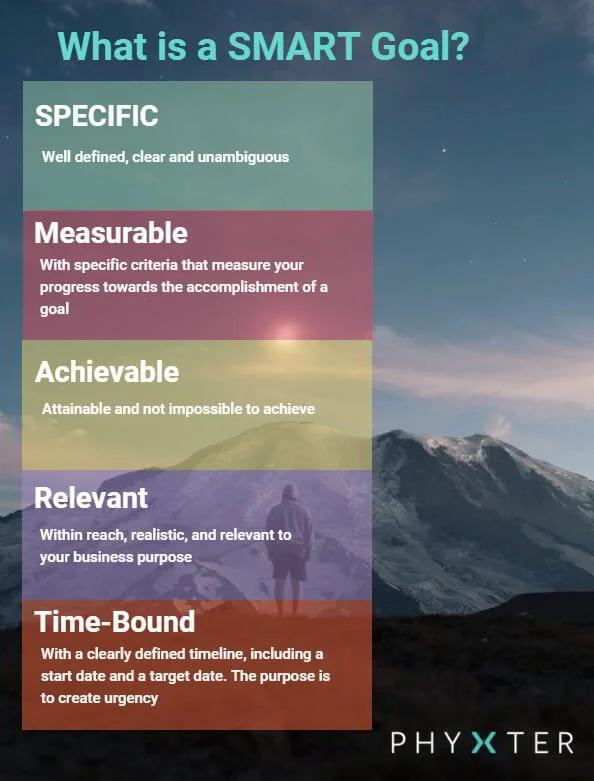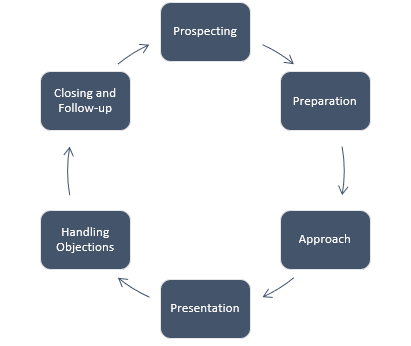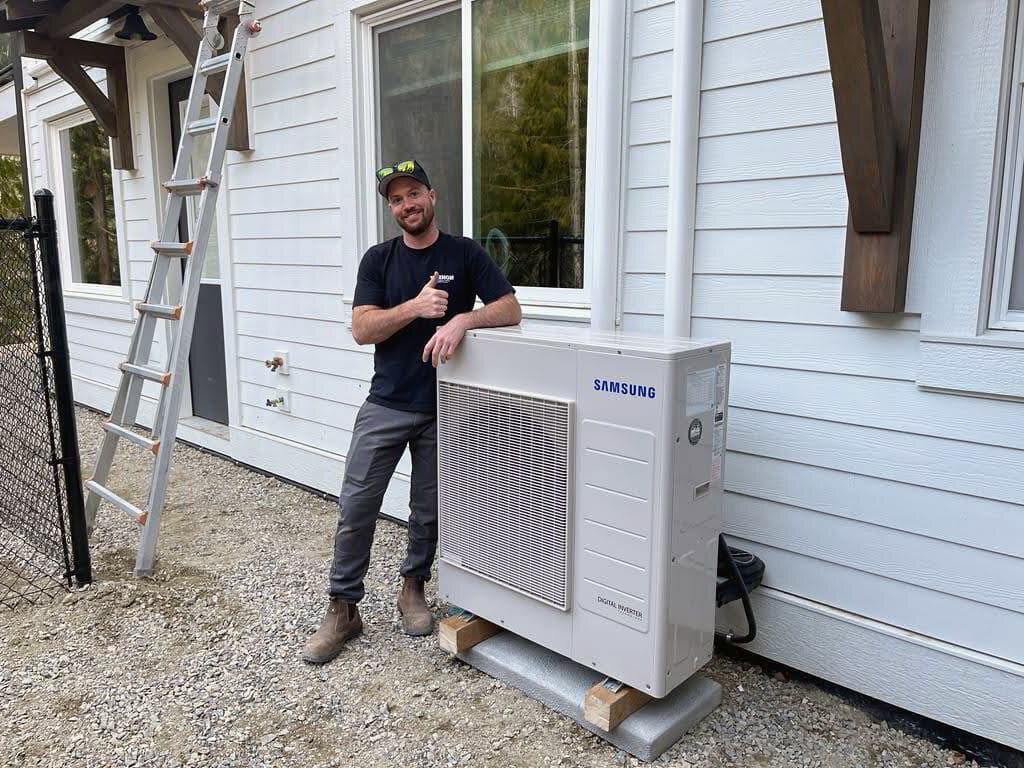The 2024 HVAC Contractors Guide to Starting a HVAC Business from Scratch
Do you dream of starting your own business as an HVAC Tech but don’t know how to start an HVAC business? Do you like working in the field but do not want to report to an overbearing Supervisor? Or maybe you want to be the boss?
Then perhaps starting your own HVAC small business is the way to go.
First, let’s get some bad news out of the way.
HVAC companies have some of the highest failure rates out of all new businesses. In the US, approximately 20 percent of HVAC contractors fail across the industry annually, with 70% percent of new HVAC businesses failing in their first year of operation.
So, what’s the good news? Well, according to the numbers:
- From 2018 to 2028, the HVAC industry will need an additional 46,300 HVAC technicians, a change of 13%. Much higher than all other occupations.
- By the end of 2022, over 25 billion devices will incorporate smart technologies.
- The US residential HVAC industry’s growth from 2018 to 2019 was 5% and continues to grow at a similar rate.
- And finally, the HVAC equipment with the highest demand in the US was the unitary air conditioning system.
Recent changes in energy efficiency standards will fuel even more growth in the HVACR industry. These changes have prompted improvements in HVACR equipment and the subsequent replacement of outdated installations.
Further technological advancements are now playing a more significant role in the HVACR industry’s operations and products. Automation within sales and service processes will become more prominent in the industry.
These advancements will allow customers to control more of the process through smartphone apps, while other mobile technologies will better equip HVACR contractors to run their businesses more efficiently.
The better news is that Phyxter can help, so let’s get started. This is a large article, so feel free to skip to the sections that interest you.
Table of Contents
⭐ Step 1: Have an Understanding of What Makes a Business Successful.

Launching a new business can be daunting. You could be a great tech in your field, but you’re probably not a business major.
Starting a successful company is one area where you can’t shoot from the hip. To offset those risks, you should create a realistic business plan.
The plan doesn’t need to be complicated but will help you define your vision, set SMART goals, and establish strategies to meet those goals.

Before starting your business plan, you will need a general idea about what you want to do and what market you will serve.
Are you going to be a solo operation or join a franchise?
Both have their advantages and disadvantages. I will leave this question up to you. If it’s a solo operation, then keep reading.
🔬 Situation Analysis
Discussing personal sacrifices is a must when discussing starting any business.
The first couple of years is going to be tough for you.
You will be working extended hours on the revenue-generating jobs and after-hours building the business.
Talk to your family about your strategy and get them on board.
You will need their support. If things at home are not going well, you will not succeed.
Your focus needs to be on growing your HVAC business, not on what’s going on at home.
These can be significant distractions you do not need!
💵 Cash, Money, Dineros, Argent!
Hopefully, that got your attention. Do you know the number one reason why businesses fail?
You guessed it…. Cash!
Inadequate cash reserves are the top reason small businesses fail and will shut you down faster than anything else.
💲 Cash Flow
This is where some knowledge of business comes into play. Understanding cash flow and how it works is very important.
Cash flow is the money that’s moving in and out of your business. The trick here is to ensure more money flows into the business than out.
- Cash flowing into the business is from customers buying your services and products. If customers don’t pay at the time of purchase, then this cash will sit in what’s known as accounts receivable.
- Cash flowing out of your business is in the form of payments, such as rent, mortgage, vehicle expenses, tooling, inventory, and other accounts payable.
The first six months of starting your HVAC business are the most crucial.
If you don’t have enough cash during this period, your success rate will be very low.
It is possible to make a profit and have zero cash.
Profit is an accounting concept, and it doesn’t pay the bills. Cash does. You can have assets, like accounts receivables, but you won’t have cash if you don’t collect on what’s owed.
✅ PRO TIP: Open a separate bank account to manage your business. A different account will make it easier to manage your cash regularly.
The final tip is, be positive!
Build a plan to be a successful HVAC company.
Anyone can start a company that’s going to fail.
It would help if you wired your mind to think positively.
The steps in this guide will help you start your business, but only you know how to make it successful.
Your mission statement in your business plan should be playing to win and crush the competition.
Listen to Phyxter CEO Jake Gibson discuss ‘Growing An HVAC Business in Today’s World’ with Gary McCreadie from HVAC Know It All.
⭐ Step 2: Create a Killer HVAC Business Plan.

Starting a successful HVAC business begins with an HVAC business model or a plan.
A business plan is a road map of where you are going and how you are going to get there.
A business plan for a new one-person operation doesn’t have to be complicated, but it does need the basics.
If you need funding from a bank or other investors, they will want to see you are serious about being successful, and you do this by building a solid business plan.
Your plan helps educate banks and investors about your business, financial situation, mission, and goals.
If you don’t need funding from others, creating a business plan is still a great idea.
You can’t quantify your approach without understanding your target market, researching your competition, and conducting a market analysis.
This business plan acts as a road map to help identify the specific actions you need to take to reach your strategic goal.
Also, the financial section of your plan can be used as your business budget and help manage cash flow every month in the initial stages of your business.
A business plan is usually a very detailed document; creating one can be overwhelming.
To get started, educate yourself online with all the parts of a typical business plan.
Then you can tackle each section one by one until you’re done
Here’s a warning, take your time, and do your homework!
Luckily there are a ton of resources online to help you.
The US Small Business Administration has plenty of resources to help small businesses.
THE US SBA lists the following as the standard elements of a business plan:
- Executive Summary
- Company Description
- Market Analysis
- Service or Product line
- Marketing and Sales
- Financial Projections
- Appendix
Don’t worry; we will go over each one of these sections in detail.
The Executive Summary
As the heading surmises, it’s a summary of the entire plan.
You will give a brief overview and highlight the critical points of each of the other sections here.
Its purpose is to quickly educate readers on the upcoming content of the business plan.
This section is best left until last. Keep it short and concise.
It must grab the reader’s attention to ensure they read the rest.
Fail to capture interest here, and the reader will likely not continue to read the rest.
Company Description
In this section, you want to describe the vision and direction of your HVAC company, so potential partners or lenders can accurately understand who you are.
You will want to clearly explain your company’s purpose and what problems you will solve for your target customers.
This proposed solution is your competitive advantage.
The problem should be a void that needs filling in your target market.
We will discuss this further in our market analysis.
Your competitive advantage is where you will generate revenue.
Some common elements of a company description are:
Company Name:
The official name of your HVAC business as registered in your state.
Types of Business Structure:
For the US, the most relevant are: Sole proprietorship, Partnership, LLC, and Corporation.
In Canada, they are; Sole Proprietorships, Partnerships, and corporations.
Ownership/ Management Team:
Key people in the company. If it’s just you, this one is easy.
Location:
Where is your company located?
Company History:
Why are you starting this business? What is your inspiration? What void are you resolving with your proposed solution?
Mission Statement:
A clear and concise statement that reflects the purpose of your company.
Products and Services and Target Market:
An overview of what you plan to sell and what customers are your target market.
Objectives:
What do you want to accomplish in the immediate future based on the rest of your business plan? Also, include future growth goals.
Vision Statement:
This will be a clear and concise statement of how you envision your company’s future.
Market Analysis
This section, by far, will be the most time-consuming assignment but is also the most critical for a brand-new HVAC company looking to break into a possibly saturated market.
This analysis should provide a detailed overview of the industry or market you intend to sell your services or products and what your target customers look like.
Be sure to include statistics from your research to support your claims.
Some common elements of a Market Analysis are:
Industry Description and Outlook:
Detailed statistics that define industry size, trends, growth rate, and future outlook.
Target Market:
Who are your future clients or customers?
Include data on the demographics of your proposed service area: age, gender, income level, family size, and lifestyle preferences.
You should also include the target market size, the customers’ motivations, and how you intend to reach those customers.
Market Test Results:
This is where you include the results of your initial market research on your test market.
All other data and information can be included in the Appendix as backup data to help support your argument.
Competitive Analysis:
This is where you state information about your competition.
What are the potential roadblocks that prevent you from entering the market?
Along with the analysis of your competition, you will want to include a SWOT analysis of your business—more on a SWOT analysis below.
Market Analysis Research
Conducting a market analysis is easier than expected, but it will take some research.
Most contractors don’t put effort into doing this, but it does give you a significant strategic advantage.
Who are your customers?
You’ll start by determining how many potential customers are in your area of operations; maybe it’s homeowners in Vernon, BC.
Using this example, there is a population of approximately 50,000, with the average home having 2.2 occupants and 71% of the homes being occupied by owners – that means there are 16,136 owner-occupied homes and 6,591 landlord-controlled homes in the Vernon, BC, area.
Now, how much will owner-occupied homes spend on HVAC every year?
The recommended home repair budget is 1% of a home’s value, and the average value of a home in Vernon is $450,000, meaning each home should budget $4500 per year on home repairs.
Some simple research shows that the percentage of home repair spend on HVAC is approximately 15%, meaning every year, on average, homeowners spend $675 on HVAC.
So, now you have your market size – 16,136 x $675 = $10,891,800.
Next, you’ll determine if the market for HVAC in owner-occupied homes can support another HVAC contractor.
There are 18 HVAC contractors in Vernon, BC, which means that there is an average of $605,100 in business available for each one…all you need to do is get your fair share.
How are you going to get your fair share?
You’ll need to determine if you need any licenses, insurance, do the customers in Vernon have particular buying patterns, what is the average age of homes, and what is the average income for the area.
What you need to do is determine what you are going to sell, whom you are going to sell it to, and how you are going to get your name in front of your customers.
Here’s a checklist of some info you’ll need:
- Population
- Average occupants per home
- Percent of owner-occupied homes
- Average home value
- Licenses needed
- Insurance needed
- Advertising channels (online, classifieds, local news channels, etc.)
SWOT Analysis
A SWOT Analysis is quite simple. It is merely the strengths, weaknesses, opportunities, and threats that face your business.
Conducting a SWOT analysis is a diagnostic check of your business for all the positive and negative things currently facing your business.
So what does all that mean?
The first two (Strengths and Weaknesses) are internal factors you control.
Your strengths could be your unique product or service or your existing customer base from your previous employment.
Weaknesses might be a weak online presence or disorganized invoicing processes.
The second two (Opportunities and Threats) are external factors you cannot control.
Opportunities could be new technology becoming available or the lifting of the recession caused by the global health crisis.
Threats might be changing customer preferences or increased competition in your area.
Properly creating and utilizing a SWOT analysis in your business will help you understand all of those factors and allow you to put a contingency plan in place to turn those weaknesses and threats into positive factors.

Service or Product Line
Based on your market analysis, what area of expertise are you going to specialize in?
New installations of high-efficiency HVAC systems in older homes may be your highest revenue-generating service, so that’s what you are going to state in this section.
Also, include all of your auxiliary services.
Are you also going to sell products and spare parts from certain manufacturers?
In your first few years, you want to keep it real simple.
Once you’re an established business, you can review your service and product lines.
When ready, you can add complementary services and sales, such as ductwork, insulation, plumbing, indoor air quality inspections, etc.
Are you highly specialized and certified?
Then maybe your price point is not the cheapest in the market.
Your competitive advantage then is going to be exceptional service and high-quality installations, so that’s what will feed into your marketing strategy.
Marketing Strategy
A marketing strategy is vital for all businesses as it clearly outlines how they will attract new customers and promote their products and services by marketing their competitive advantage or unique selling proposition.
Your marketing strategy should build upon the market analysis that you conducted beforehand.
You can build a marketing strategy purely for your business plan or apply the knowledge you have gained through your marketing plan.
For this document, we will go into further details as part of Step 3: Building a Marketing Plan. Then a snapshot of essential information can go into this section.
✅ PRO TIP: The next part of the business plan will outline your financial analysis and budget. Keep this in mind when building your marketing plan. You can have a killer marketing plan, but it’s worthless if you can’t afford it.
Example Marketing Ideas
1. Send a press release to local news channels
2. Post regularly in the classifieds
3. Get ratings and reviews on Google Business Profile
4. Networking events
5. Create a referral program
- Give a $20 gift card to a locally owned coffee shop for every referral that ends up being a paying customer
6. Website (check out Phyxter Websites)
- Talk to us about a local listing and SEO strategy
- Check out our Local Partner Program
7. Social Media
- Pages for posting
- Ads
8. Listing sites and apps
9. Referral partnerships with other trades
- Painters
- Electricians
- Plumbers
- Roofers
- Landscapers
- House Cleaners
Financial Plan
Your financial plan is the final significant piece of the puzzle.
In this section, you will outline the data for financing your business.
You will identify what you need to launch, what you will need going forward to expand your operation, and an estimation of your company’s operating expenses.
Financial planning for starting a successful HVAC business is probably not a skillset of an HVAC tech, so seek help from an accountant or a financial planner for this section.
You will need help from a professional if you are seeking funding as part of your plan.
Your financial analysis section should be based on estimates from your research for new businesses or data from established companies.
At a minimum, your plan should include the following.
Balance Sheet:
A business statement that shows what the business owns, what the company owes, and the value of the owner’s investment in the business. A balance sheet is vital if you are seeking funding from a lender.
Cash Flow Analysis:
This is an overview of your cash inflows and outflows. Your goal during start-up and operation is to maintain adequate cash flow to sustain your business. Also, take into consideration seasonality, given the nature of the industry.
Profit and Loss Analysis:
This is your income statement that subtracts the costs of your business from what you earn over a specific amount of time. This is typically a quarter or a whole year.
Break-even Analysis:
A break-even analysis shows your lender (if you have one) the point when you will start making a profit. It is typically used for businesses selling products but is also helpful for service-type businesses. Even if you didn’t borrow money, you should know this to gauge your progress during the start-up period.
Part of the financial planning process will be determining your HVAC business start-up costs. Based on your proposed products and services, what will you need to start?
Make sure you consider all capital expenditures required (which are the upfront costs of purchasing) and monthly operating expenses (all ongoing charges, such as marketing, fuel, etc.).
Some examples of capital expenditures might be:
- A suitable vehicle with logo signage
- General tooling as required by every professional
- HVAC tooling based on your specialty
- Starting inventory
- Personal Protective Equipment
- All business and HVAC licensing and certifications
- Initial marketing costs and materials
Some operating expense examples might be:
- Fuel
- Business and vehicle insurance
- Maintaining HVAC certifications
- Marketing
- Replacement tooling
- All business and HVAC licensing and certifications
Appendix
The appendix section is there to include all other supporting documentation.
If you are not seeking funding, then this section is irrelevant. If you are, then it’s essential.
Supporting documentation such as business licenses, permits, HVAC certifications, and other legal documents will all go here.
⭐ Step 3. How to Market your HVAC Business.

I don’t know how many Heating and Air Conditioning contractors I’ve talked to that say, “we just rely on word of mouth, and it keeps us busy.“
If you’re one of those contractors, you’re missing out on the bigger picture – profit margins include a combination of many variables.
One of the most critical variables is lead generation.
It’s simple supply and demand, the more leads you get, the more in demand you are, and the higher your margins can be.
Don’t get me wrong; you need to supply an excellent service for a fair price, but arriving at that reasonable price is difficult when you’re offering deals and sales all of the time just to make sure you can keep yourself busy.
The concept is simple, charge your fair price on every quote, and some people will say yes, and others will say no, but as long as you’re quoting enough to fill your time, then you’ll be more profitable.
So, here’s what you’ll need to do to get your phone ringing and your inbox full.
1. Budget for Marketing your HVAC business
This is always a highly contested topic because some independent contractors say they don’t need to advertise or market because they live off of word of mouth.
In comparison, other contractors want to take a more analytical approach by advertising and being able to turn lead generation on and off like a tap.
This is easier said than done because there are so many advertising channels to consider; websites and SEO, Facebook, Google, Bing, local advertising, mailers, lawn signs, vehicle wraps, etc., etc.
The point here is that you need to do some research to determine your Customer Acquisition Cost (CAC), then determine how many customers you need to get every week, and then do the math.
If you need 20 new customers a week, and it costs you $40 to get each new customer, then you need to spend $800 a week on marketing and advertising your HVAC business.
When considering the information above, you MUST not get complacent, and by this, I mean you should always be trying to decrease your CAC.
One of the best ways to do this is through customer retention and by growing the organic traffic to your website through SEO.
We always recommend SEO because when you spend money on it, you’re continuing to build the foundation of your business.
After all, once you’re on the first page of Google, you won’t need to advertise as much, which will bring your CAC down and thus increase your profit margins.
Also, you should never start your business until you’ve set enough money aside to get your business wholly organized and enough to spend on advertising campaigns.
Your ad campaigns will improve over time if you pay attention to the numbers – spend $1,000 on Facebook ads and generate $1,000 in profit – you need to improve.
You should always know how you got a customer, and it’s as simple as asking them, “how did you hear about us.”
Finally, when creating your budget, you have to consider everything that you think you might need, and then to be safe, you should add 30%.
Get that money set aside and then start your business (mind you, we usually recommend getting your website built and your SEO campaign started 3-4 months before quitting your job and going out on your own).
2. Digital Marketing
This is where you get to decide what kind of life you want.
If you didn’t know this, skilled trades contractors have the highest failure rate for small businesses in the United States, and that’s because so many tradespeople continue to be just tradespeople instead of business managers.
One of the first things you need to understand is that the profit margins for your business are driven by the number of times your phone rings every day…
It’s basic economics; the more in demand you are, the higher your prices can be.
But how or why does that apply to making your company digital?
Well, the better you get your business in front of people, the more they will call you, and digital is not only the easiest way to do this but also the cheapest and least time-consuming.
Below I will describe what we recommend and why we recommend doing it for your HVAC business.
How and why to get a website for your HVAC business:
We are obviously biased regarding websites because we believe our website builder is perfect for HVAC contractors; it’s cost-effective and comes with more features built-in than any other option on the market.
There are other options, like Wix, Squarespace, and GoDaddy, but when building a website for your HVAC business, there isn’t another one out there that knows HVAC as well as we do.
Why are websites so important for your HVAC company?
Well, without one, you have a minimal chance of getting found or hired by people searching on Google, Bing, Yahoo, or any other search engine or local listing platform (Yelp, YellowPages, etc.).
It’s also hard for you to improve your advertising strategies over time because, without a website to send people to, your Facebook or Google pixels won’t be able to track who’s familiar with or interested in your business.
This is enormous because retargeting campaigns are significantly more effective than cold campaigns.
Take my word for it and just get a website. You can host your site on Phyxter for as little as $14/ month, and if you need help designing a site, you can get us to do that for as low as $750, and you’ll get a website like McGinley Services.
The next reason for getting a website is for when you decide to retire and you want to sell your business…
And if you are asking why that matter, just ask yourself this; why would I want to buy a company that only gets customers when they advertise when I could just do that myself…
Wouldn’t it be great if the business I wanted to buy was ranked at the top of Google search results and the phone rang every day for free? Now that would be valuable!
Your website is your business, and the more people that come to your site every day for free means that the value of your business becomes more significant, so get started today by clicking here to start a free trial with our website builder.
Why and how to market your business using social media:
This is one for the record books – social media for HVAC contractors, because doesn’t every homeowner want to see posts of your latest ductless split installation – the answer to that is no, just in case you were wondering. So what will you be posting on social media?
Before we get to that, I want to talk about the goals for social media and how you can build long-term value with it.
Goals:
- Brand awareness
- New customers
Long-Term Value
- Followers
- Automation Process
Let’s start with how to get brand awareness with social media.
We’re going to use Facebook in our example because we believe it’s the easiest to get started with, and it has the most robust advertising platform.
How to get brand awareness for your HVAC business using Facebook:
You need to figure out who your target market is and then determine what kind of content they like to not only consume every day but also what they like to share, comment on, and “Like.”
Take a look at our Facebook page as an example. There are many posts about what we do or our products; there are mostly just memes and jokes…which, according to our research tradespeople like.
Here’s a good example of a Facebook page for a new HVAC company.
Now the reason you’re posting content like this is that it’s what your customers want to see every day – and by them seeing it every day your brand is becoming more familiar with them; so when they actually need to hire someone that does what you do, you’ll at least be an option for them.
You’re probably thinking that posting 3-5 times each day is impossible and that finding or creating that much content is outside your expertise.
Well, we’re happy to tell you that there are inexpensive software tools on the market that are easy to use and can automate these tasks so that you’ll only need to spend a few hours a month on them.
You can check out the tools below:
- Publer for social media posting
- Postradamus for finding content (this is a sensitive tool, and we’re not sure how stable the code is, but it seems to work well…if we find something better, we’ll adjust this article)
The above tools will help you to create a library of great quality posts as well as to automate the posting schedule so you can sit back and relax while your followers enjoy it.
Wait! How do you get your initial followers, though?
You’ll have to do two things, ask all of your friends and family to like and follow your page.
After that, you’ll advertise Vernon Air Conditioning, Plumbing & Electrical Services that says, “If you like interesting facts and DIY home repairs, then you should like our page.”
Vernon AC posts content that includes interesting facts and DIY, so it’s definitely not a lie, and then they might throw in the odd post about a sale or promotion they’re having.
If any of this is too overwhelming, check the budget you created above to see if you have room to get us to help you implement any of these strategies…or feel free to book a free consultation here to discuss your business.
How to get new customers using social media:
Now that you have people following your page and some visiting your website, you’ll need to figure out how to convert them into paying customers.
To start, you’ll want to install a Facebook tracking pixel on your website (I’d also recommend installing their chat widget).
The tracking pixel will allow you to retarget people who have interacted with your Facebook page or your website, which means they’re familiar with your brand and more apt to trust you and purchase from you.
After you’ve installed the pixel and let it collect data for a few months, you’ll be able to set up a retargeting campaign, but since you probably want customers sooner than that, let’s discuss what you could do in the meantime.
How your HVAC business can target customers with a Facebook ad.
The first step is to determine your target customer, and please don’t say, homeowners!
We need to be more specific, how old are they, where they live, and what are they interested in (DIY, HVAC, air conditioning, furnaces, air quality, duct cleaning, etc.).
You need to be as specific as possible because you don’t want to pay for an ad that targets a 19-year-old who rents in the area, do you?
After you’ve determined who you’re going to target, and this is by far the most critical part of your campaign, you can move on to how you’re going to get their attention with text and imagery.
One of the beautiful things about advertising with Facebook is that you can A/B test everything.
From long to short text, to which emoji drives more clicks, and obviously which image stops people from scrolling by and gets them to engage with your ad.
You’ll need to get creative here, so keep your head up and keep moving forward.
We know that with enough training and enough time, you’ll be able to do this yourself.
Still, if you’re looking for a faster solution, you can always hire an agency to set this up for you…
Just keep in mind that agencies aren’t cheap, but they might just be less expensive than you setting your campaign up wrong and getting nothing for your money.
So do your research before hiring an agency, check their references and their reviews, and don’t commit to anything longer than one month initially.
They should always need to earn your business, and keeping them on their toes each month is the best way to do that.
If you want to connect with an agency we trust, simply email us at [email protected] to start the conversation.
Building long-term value for your HVAC business with social media
This is straightforward; more followers equals more visibility, brand reach, and social proof.
When someone sees that 1,000 other people like your page, they will not only trust you more, but they’ll be more apt to like/follow your page.
So by building your following by posting content that people want instead of what you want them to see about your business, you’ll be creating more brand awareness by acquiring more followers.
Therefore, when someone comes to buy your business, they’ll be getting an asset with real tangible and sustainable long-term value for the HVAC business.
But how will they be able to continue posting at the rate you do if they’re not familiar with your process?
You’ll need to document how you find content and schedule it.
Simply create a word document and labeled it as Social Media Posting Process, then write a short blurb about how you use each of the tools we mentioned above…or just write down that you use Phyxter to do it all for you 🙂
2a. Local Listings and why citations like this are so crucial to your HVAC business:
This isn’t considered social media, but in a way, it’s very similar because local listings are places for customers to find you, and you can advertise on them.
However, there’s one big difference – Google and other search engines LOVE local listings. The more of them that you have your business name, address, and phone number on, the higher you’ll rank in Google Maps…
It’s pretty much as simple as getting more local listings than your competitors, and you’ll rank above them.
We provide a service where we get local listings for your HVAC business.
Before starting, its best for you to give as a call and discuss the right SEO strategy for you first.
To recap everything about digital marketing for your HVAC business, I want to emphasize that everything comes down to visibility and brand awareness.
When someone searches for HVAC businesses near me in a search engine, you’ll have three or four chances to get seen; in the ads portion of the page (or Google Guaranteed), the map pack (the top three results in Google Maps), or in the organic results.
The easiest way to show up works in that order as well; you can pay to show up, you can get more local listings than your competitors and show up in Google Maps, or you can rock at SEO and show up in the organic results.
Now, I have one more thing to add, the value to your business works in the opposite direction because your business becomes significantly more valuable when you start showing up on the first page for search engine results.
So like any balanced portfolio, you should invest in all three – ads, local listings, and SEO.
3. Referral Partnerships
This is one of my favorite ways to generate business.
I mentioned some examples above, so start there, and you’ll see how far it’ll take you.
Regarding referrals, you need to make sure there’s a strategy – create a group chat with all of your partners because they will all be partners with each other.
Here’s an idea for getting started.
Get a postcard designed with something clever on one side and the list of “Family-owned and locally run contractors” on the back.
Each partner will get 100 of these cards to hand out, whether it’s to their new customers, old customers, family members, friends, and especially neighbors.
Another option is to team up on a paid ”mailer” to send the postcard to an entire community.
Instead of your HVAC business paying the total cost of the mailer, you can split it between 5 to 10 companies, which means you’ll get a significantly better result for less.
4. Networking
Think Chamber of Commerce, BNI, or other networking groups.
These groups will be similar to your “Referral Partners” but have different areas of expertise.
There will most likely be real estate brokers, lawyers, and other professionals trying to grow their brand.
5. Press Release
Call or email local news stations, podcasts, radios, and associations to let them know you’re in business.
Generally, this kind of thing works best if you offer their “listeners” or “members” a time-sensitive discount, …especially if it’s an association.
6. Thank you cards
Every customer you ever get should get a thank you card after you do business with them.
A small sign of appreciation goes a long way and can lead to word-of-mouth referrals.
7. Referral program
Set up a simple referral strategy like the following: Refer a friend to Vernon Air Conditioning, Plumbing & Electrical Services and get a $20 Gift Card when they hire us to perform “______________________.”
Offer this to every customer as well.
8. Reputation Management
You must place an incredible amount of focus on your online reputation.
We know it can be uncomfortable asking someone for a review, but this is your business, and if you want to succeed, you have to do it.
No matter how good you are, it’s statistically inevitable that you will get a bad review from time to time, so you need to make sure you’re regularly getting good ones to bury the bad ones.
These were just some ideas to include in your strategy, but whatever you choose to do, you need to ensure that you understand the return on your ad spend.
If you spend $1000 buying postcards and getting them mailed out, you’ll want to ensure you know how much business you got from it.
To do this effectively, you should set up a tracking process and follow that process every day.
Make sure to ask every customer where they heard about you and write it down in your tracking sheet (if you don’t have a tracking sheet, just contact our support email, and we’ll send you a great template).
If you want to find out how to market your HVAC business online, then check out our digital domination packages.
We have a package for all HVAC businesses regardless of what stage you are in, or just set up a consultation to discuss a custom strategy just for you.
If you’re in any sort of small business, not a home-services contractor, and you’re reading this, then our partner, SEO Kangaroo Digital Marketing, can help too.
SEO Kangaroo Digital Marketing specializes in small business website design, SEO competitive analysis, content marketing, website management as well as advanced SEO.
Feel free to connect with them to discuss a custom strategy that’s right for you.
9. Sales Process
The graphic below is self-explanatory, but I will review it just to clarify a few things.

Prospecting:
Who do you want to target? Is it an area of the city, a particular Facebook group, or maybe a local association – figure out who they are and how to get to them?
Preparation:
What will you say to them, and why will it resonate with them? Will you be able to get their attention with your message?
Approach:
How will you get your message in front of them; mailers, networking, social media, search engine ads?
Presentation:
After responding to your outreach, they will want more information; what will you present them with? What kind of proposal does your target customer want to see?
You’ll need to understand what is essential to your specific target customer – do they care most about quality, price, or trust?
Handling Objections:
you’ll hear the same thing over and over again…” I’m not sure I can afford that model,” or maybe “Can you just change the compressor?”.
You need to be able to respond quickly and with thoroughly thought-out answers, so have the solutions ready for the most commonly used objections.
Maybe you’ll be able to offer financing or have a list of references available if they are concerned about your company being young.
Closing and Follow-up:
How will you close…what do you have in your back pocket that will get your customer to commit?
Whatever it is, at the end of the day, you’ll need to ask them for the sale.
You might say, “If you can commit to the sale today, we’ll be able to get the unit ordered and installed by this date.
“Another option is to offer a time-sensitive deal. “If you can commit today, we’ll be able to get you the air conditioner manufacturers discount of 5% off”.
Whatever it is, you need to figure out what works best for you to close the sale and continuously get better at it.
Finally, you’ll want to stay in constant communication with your new customer, keep them informed throughout the project, and follow up with them a couple of weeks after the project ended to see if everything is still all right.
10. Pricing Strategies
A reliable pricing strategy will take some research, testing, and time to get it right.
At the end of the day, it comes down to data and the ability to always understand your financials.
Some information you’re going to want to get and track:
1. Competitor labor rates
2. Net margin expectations (usually around 8%)
3. Fixed costs (truck, tools, rent, phones, fuel, etc.)
4. Customer acquisition cost (ad cost divided by new customers)
5. Chose a strategy!
A. SWAG (guessing)
Who do you want to target? Is it an area of the city, a particular Facebook group, or maybe a local association – figure out who they are and how to get to them?
B. Divisor method:
i. You Estimated the Cost of the Sale for this new air conditioning installation job is $3,906
ii. Your Forecasted Overhead = 28%
iii. Your Desired Net Profit = 8%
1. Add Percentages together. 28% + 8% = 36%
2. Subtract the 36% from 1.0 (1 – .36 = 0.64)
3. The Divisor for this new air conditioning job is 0.64
4. Divide the Cost of the Sale $3,906 by the Divisor 0.64 ($3,906/.64)
5. This formula equates to the Right Price of $6,103
iv. You recovered 100% of the cost of the sale, 100% of your Overhead, and 100% of your desired net profit.
v. This method requires that you know precisely what your overhead and desired net profits should be. If you don’t know, then this method is risky and could be dangerous.
C. Markup/ Multiplier
This method is considered just as dangerous as the divisor method; if any of your numbers are off, you could be in trouble, and the job could lose you money.
In this process, you multiply your total cost by a set number to get the desired gross margin.
What you need to be wary of, though is that margin volume for a small business can be just as important as margin percentage…
You need to make as many raw dollars as possible to pay your bills.
✅ PRO TIP: Remember, the margin is not the same as markup. The difference is that margin is sales minus the costs of goods or services sold. Markup is the amount the cost increases to derive a selling price.
Example: A 100% markup will only equate to a 50% margin. You can go wrong here in a big way, so be careful and understand those terms.
D. Gross profit per man-day
You need to determine how many dollars of profit you must make daily and ensure that your pricing reflects your goals.
If you need to earn $500 per day of profit and you can do five service calls per day, then you need to make $100 of gross profit per call.
If you’re on a larger multiple-day project, you just need to understand your daily expenses and price the job accordingly.
This strategy can work out very nicely, but it does require much more discipline when it comes to knowing your daily costs.
E. Dual Overhead
Assigning Overhead to material and labor creates two factors.
We then use those to apply to each job to break even before adding the desired profit.
This method requires financial discipline, which is why it’s not used anymore, but it’s usually the most precise method of knowing the real effects of contracting work.
One of the issues you could have with this strategy is that you could have a lower price on projects that are heavy on material and low on labor, which means that you’ll have to complete more jobs to cover your overhead.
F. Flat-rate service
This is where you assign a labor time with a retail labor rate, add in parts cost with markup, and then create a known price for any given repair, inclusive of costs.
Done well, when you know your overheads, it’s a very effective service pricing strategy.
Many software tools are available to help with flat-rate pricing, and because they tend to consider regional pricing, they can be very accurate.
You will need to figure out what works for you, and if you didn’t notice a trend, knowing your financials is of the utmost importance.
Get good with your numbers, and success will follow.
⭐ Step 4: HVAC Licensing, Business, and Insurance Requirements

HVAC business requirements in every region across the U.S. and Canada are going to be different, whether it’s license-related or insurance.
The easiest thing to do is to contact your local regulatory office and ask them for an outline of what you’ll need.
To get started, here are a couple of resources that can help.
HVAC Related Info:
Canada: hrai.ca
U.S.: acca.org/home
U.S.: nascla.org/page/LicensingInfo
Business Related Info:
Canada: canada.ca/en/services/business/start.html
U.S.: sba.gov/business-guide/launch-your-business/register-your-business
⭐ Step 5. Launch your Successful HVAC Business

Now that you have your strategies in place, you’ll need to kick it off with a bang.
Here’s where your family and friends can help, too… you’re going to want to throw a party.
Get people involved, offer your referral program, and make a big deal out of your launch.
Below is a list of how to kick-start your business the right way.
1. Pre-launch
All your websites, local listings, and social media pages need to be completed and working on SEO 4 months before launch.
2. Family and Friend’s party
Ask for referrals, ask everyone to check into your Facebook page, and ask everyone to give you a review on Google Business Profile (formerly known as Google My Business).
This can be a personal review – John just started his HVAC business in Vernon, and although I haven’t had the chance to hire him yet, I can say that he is undoubtedly excellent at what he does and is always fair… 5-stars all day long!”
3. Press release
Two months before launch, send your executive summary to every local news channel, and let them know when you’ll be opening up for business.
Send this to every association and community organization possible.
4. Email campaign about your launch
Email EVERYONE YOU KNOW!
5. Mailers/Flyers
Whether you pay for mailers or just pound the pavement, get 1,000 flyers in mailboxes.
Mailers have an average 2% success rate… so 1,000 flyers should equal 20 customers.
6. Facebook ads and/or Google ads
This is a tough one, and we recommend you either take many online training courses or talk to a professional advertiser.
We can recommend some great options, so just contact us and ask for an introduction.
⭐ Step 6: Managing Ongoing Operations

Now that you have started, you need to maintain the momentum.
Don’t overextend yourself too quickly.
Many businesses start on the right foot and add extra resources when good times are good.
The next minute the work dries up, and you have a bunch of guys and vans sitting around that you must pay for.
Stay a one-person show for about a year to see how your business fares through all four seasons until you decide to scale up.
When you are ready to start hiring, check out this article first: Where To Find HVAC Technicians to Hire
Managing Cash
Have a cash reserve for when times are lean.
Maybe you didn’t lend money from a bank or friends and family to start your business, so you’re probably strapped for cash right out of the gate.
It could be three to six months before you earn enough to live comfortably.
Remember when we said inadequate cash reserves would kill a business quickly?
It’s true. Make sure you have a reserve stashed away that can support yourself and your family if times get tough.
Whatever software you use to manage your cash, you should be overseeing your cash flow regularly.
One easy way to ensure a smooth cash flow is to stay on top of invoicing.
Design your invoices so they are easy to read, or just use an automated software package to connect with your customer base virtually.
Also, if you are buying from a particular vendor all the time, set up payment terms with them.
Most wholesalers have these agreements for B2B sales, so why not leverage that for yourself?
You don’t want to be in a position where the money going out is COD, and your money coming in takes two weeks.
Keep it Lean
You need to be a lean, mean fighting machine from the start.
Check out our previous article on keeping your business lean.
Watch your expenses carefully, understand what business activities add value and which do not, and standardize processes where possible.
Once you know where waste is hiding, you can eliminate it.
All your focus should be on revenue-generating activities.
Also, be flexible enough to change your plan if the market changes.
You may have expertise in a particular area, but if you can’t sell that skill set, switch gears to what does.
Don’t be too stubborn to tell yourself part of your original plan isn’t working.
The market doesn’t care and won’t support you if you are too stubborn to change.
⭐ Final Word

Starting a successful HVAC business can be intimidating but will be very rewarding in the end.
You can pat yourself on the back for achieving what many could not do before you.
Even on the off chance you fail, remember you would have learned a lot on the journey.
We hope we have covered everything you need to know about starting your own successful HVAC business.
If you would like to know more, then feel free to contact us at Phyxter.

